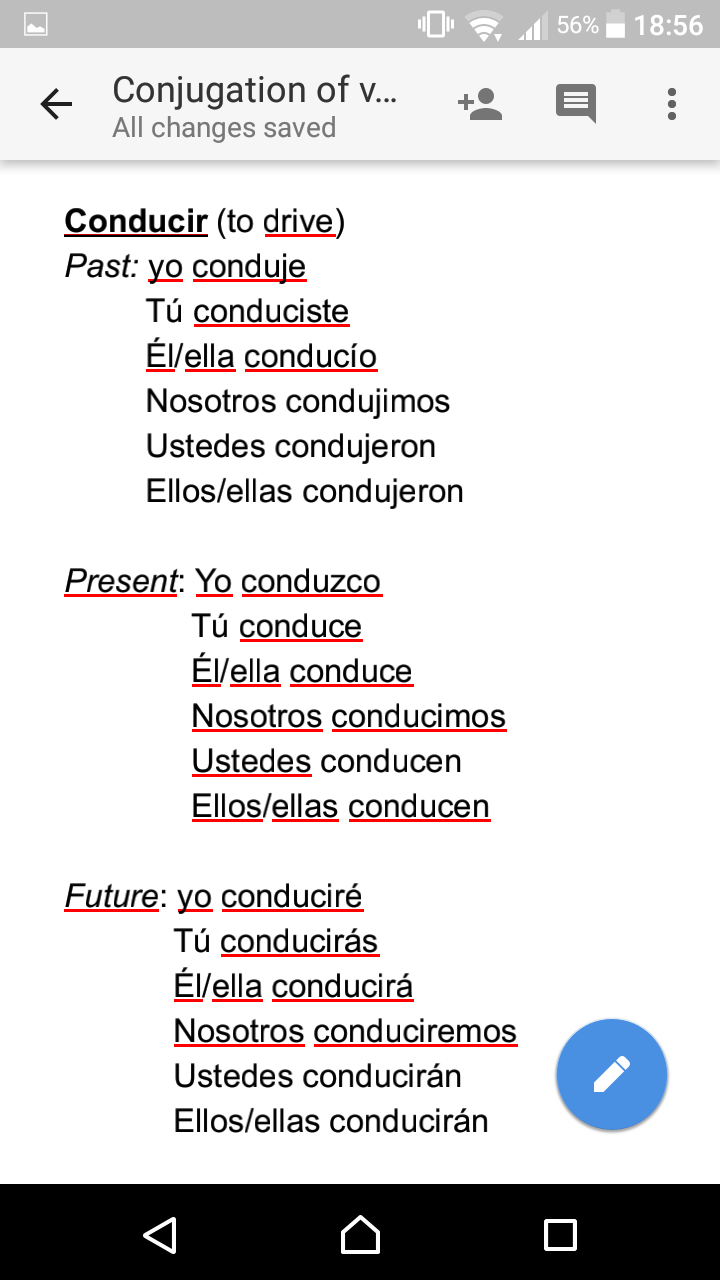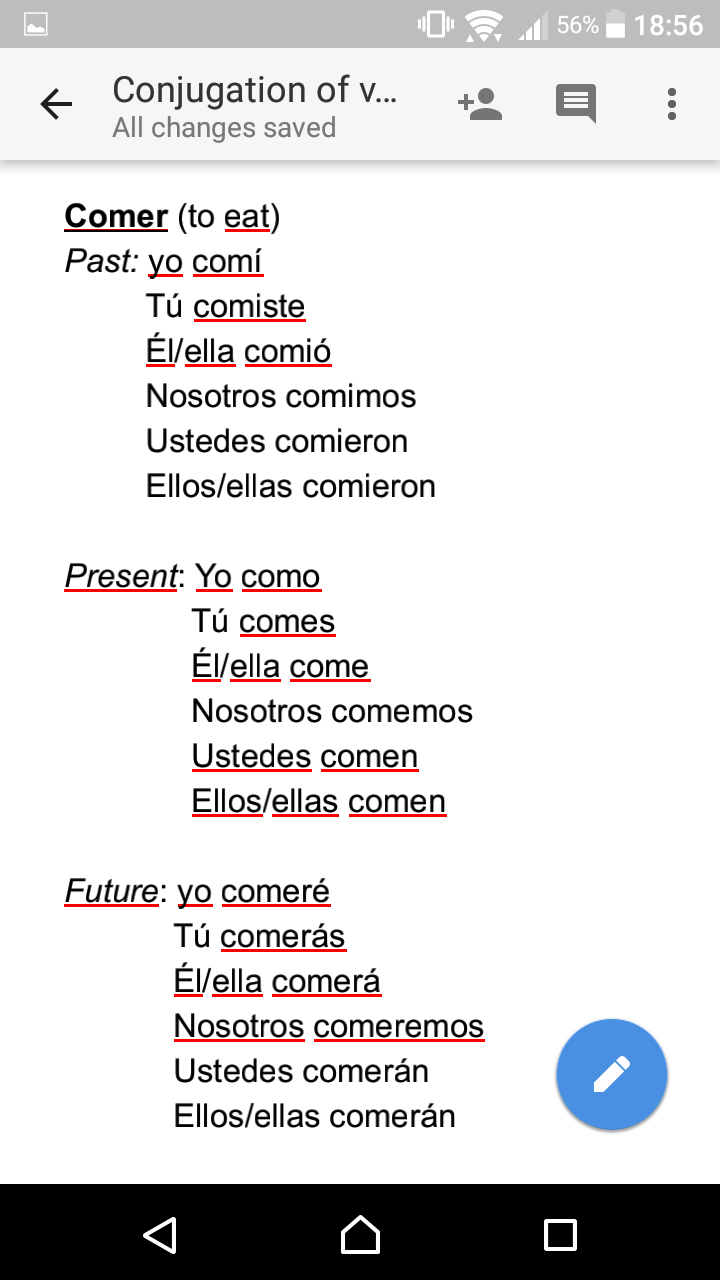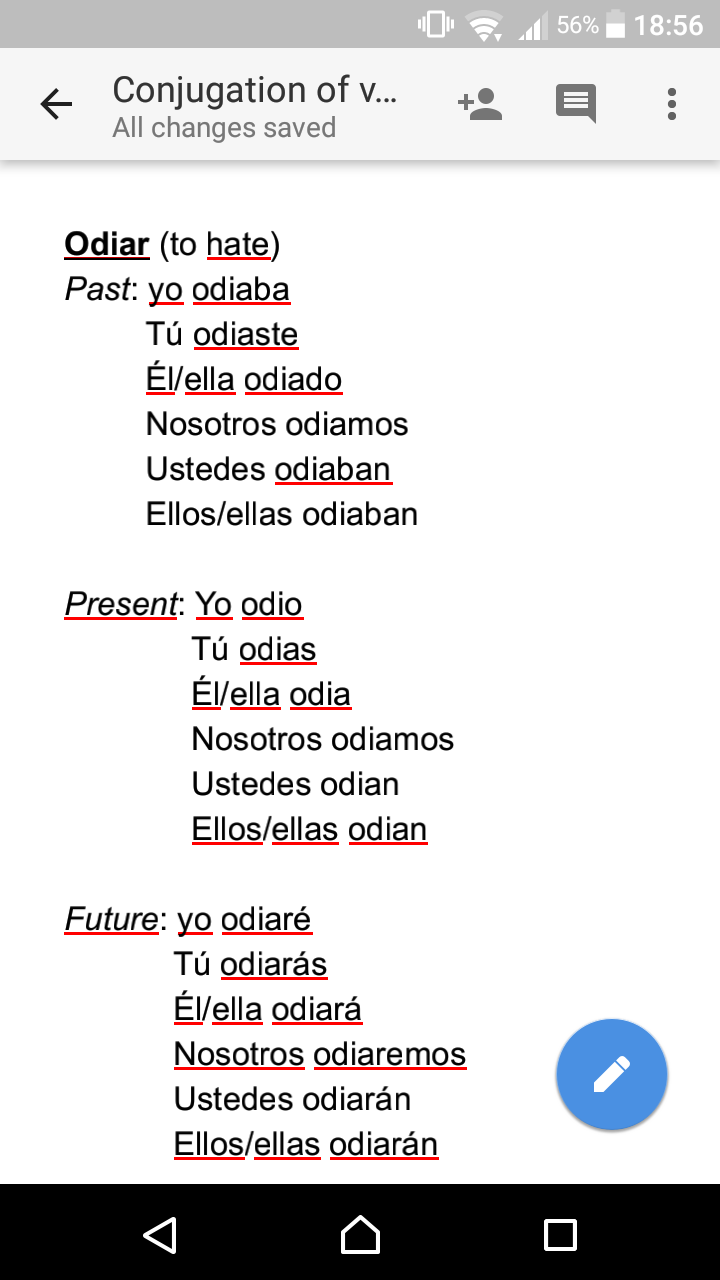After this fun session with no classes, we retake the class now.
For this part we will use the personal pronouns.
A few notes before the class:
- The order of the personal pronouns is:
First singular person
Second singular person
Third singular person
First plural person
Second plural person
Third plural person
Yo
Tú/vos/usted*
Él o ella.
Nosotros o nosotras.
Ustedes o vosotros**
Ellos o ellas.
*Remember this: we are using you as tú in Spanish.
** @ashesoftime is right the place of “vosotros” there?
-
Verbs are actions that ends in -ar, -er and -ir.
-
We use the tilde in some verbs in past and almost all in the future.
-
We use model verbs to know when they are regular and when the aren’t. (We see this later.)
***I will upload a chart tomorrow or on Wednesday. I’m in the cellphone now.
Let’s start!
The first verb we’re see today is:
Amar (to love)
Personal pronoun past
Yo amé
Tú amaste
Él amó. Ella amó.
Nosotros amamos. Nosotras amamos.
Ustedes amaron.
Ellos amaron. Ellas amaron.
Present
Yo amo
Tú amas
Él ama. Ella ama
Nosotros amamos. Nosotras amamos.
Ustedes aman
Ellos aman. Ellas aman.
Future
Yo amaré
Tú amarás
Él amará. Ella amará.
Nosotros amaremos
Ustedes amarán
Ellos o ellas amarán
Notes:
-
Is very common see/hear some people say: amastes. With a S at the end. That’s a grammatical mistake. The right form is without the S, but if you read/hear it somewhere don’t get mad (like me jaja) it is still understandable.
-
In the case of “amamos” this word is used in past and present, so:
“We loved” and “we love” are translated as the same in Spanish: nosotros (o nosotras) amamos. -
In almost all the cases, the personal pronouns ustedes y ellos (o ellas) use the same word.
For Spanish, the personal pronouns él and ella are the same (just chance the grammatical gender)
For now just this (it’s midnight here) study it, analysis it and ask me about any doubt you might have.
Later we’ll see other verbs and how to conjugate them.

 that love is our first verb
that love is our first verb 


 prepare yourself
prepare yourself 

 sorry.
sorry.


 and that reminds me of my pet
and that reminds me of my pet  ,
,






















